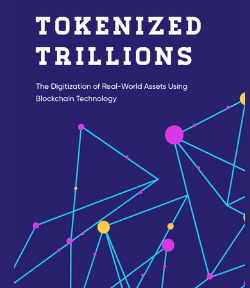
Bitcoin Halving: A Defining Phenomenon for the Cryptocurrency Market
What is the Bitcoin Halving?
Bitcoin, renowned as the first decentralized cryptocurrency, has undergone notable shifts due to a mechanism called “Bitcoin Halving.” This system, programmed into Bitcoin’s code, affects the dynamics of bitcoin supply and consequently its market valuation. In this article, we will explore the underpinning concepts and implications of Bitcoin halving and provide insights for traders and investors.
Understanding the Bitcoin Network and Mining Process
Bitcoin operates on a blockchain – a decentralized ledger run by a network of nodes, each validating or rejecting transactions based on specified criteria. While not all nodes mine, those who do, called “miners,” participate in the proof-of-work process, solving complex mathematical problems to confirm transaction legitimacy and create new blocks.
Miners are pivotal to blockchain’s integrity and are rewarded with bitcoins for every block successfully mined. This reward system ensures continued participation in securing the network until the maximum supply of 21 million bitcoins is reached around 2140.
Bitcoin Halving: A Cyclical Event
Bitcoin Halving occurs approximately every four years or after every 210,000 blocks are mined. This event reduces the block rewards that miners receive by half, diminishing the rate at which new bitcoins enter circulation. Historically, Bitcoin halvings have transpired in 2012, 2016, and 2020, with the next anticipated in April 2024.
The Rationale behind Bitcoin Halving
Satoshi Nakamoto, Bitcoin’s elusive creator, instituted halving to emulate scarcity and controlled supply, akin to precious metals like gold. By progressively lowering block rewards, the rate of new bitcoins generated is constricted, positioning Bitcoin as a deflationary asset.
This mechanism also curtails inflation within the Bitcoin ecosystem, contrasting it with fiat currencies, where central banks can induce inflation by printing additional money. Consequently, Bitcoin’s intrinsic value is projected to increase over time as supply decreases or remains static while demand ascends.

Impacts on the Market
Supply and Demand Dynamics
Halving inherently affects supply and demand economics. As the influx of new bitcoins is mitigated, an ensuing demand surge typically catalyzes price escalations, resulting in eventual bull markets, as evidenced by historical precedents post-halving events.
Price Volatility and Valuation
While historical patterns hint at long-term price appreciation post-halving, it’s imperative for investors to consider market volatilities and external factors that can diverge from past behaviors. The anticipation of reduced supply and subsequent increased demand has traditionally fostered positive market sentiment, but relying solely on past performances is not a foolproof strategy.
Mining Landscape and Network Security
A reduced block reward necessitates operational modifications for miners. The heightened competition post-halving often marginalizes less efficient miners, impacting the network’s decentralization and security. However, historical trajectories indicate that halvings eventually fortify both the network and miners by incentivizing operational efficiency and fostering a more stable mining ecosystem.
Investor and Trader Considerations
For those invested in the crypto markets, understanding the implications of the upcoming halving is crucial. Here are several considerations and strategies investors might ponder:
-
Market Sentiment and Volatility: Assessing market sentiment is essential, as it usually heightens around halving events. Expect probable fluctuations and prepare for volatility by diversifying and maintaining a balanced portfolio.
-
Price Trends and Analysis: Regularly scrutinize price trends and conduct thorough market analysis to identify potential growth trajectories and establish informed entry and exit points.
-
Long-Term Perspective: Consider adopting a long-term perspective, as historical patterns suggest that Bitcoin experiences sustained growth post-halving.
-
Diversification: Diversify holdings to mitigate risks associated with market uncertainties, regulatory developments, and potential technological advancements in mining.
Strategic Positioning and Forecasts
Given the historic patterns, many crypto enthusiasts are optimistic about Bitcoin’s growth trajectory post the 2024 halving. However, this optimism should be balanced with cautious and informed decision-making, considering the evolving market landscape, increased mainstream adoption, regulatory developments, and technological innovations.
Conclusion: A Transformative Catalyst for Bitcoin
Bitcoin Halving is a transformative and defining aspect of Bitcoin’s protocol, ensuring its scarcity, fostering long-term value, and limiting inflation. It introduces a myriad of market dynamics, affecting miners, investors, and the overall ecosystem. The cyclical nature of halving impacts supply and demand, potentially elevating market values, fostering positive sentiments, and presenting opportunities for informed investors.
While historical data presents a compelling narrative of post-halving prosperity, market participants should approach the upcoming event with a refined strategy, aligning their portfolio to navigate inherent volatilities and capitalize on prospective opportunities. By understanding the profound implications of halving events and strategically positioning their assets, investors can leverage the transformative potential of Bitcoin in reshaping the financial landscape.






